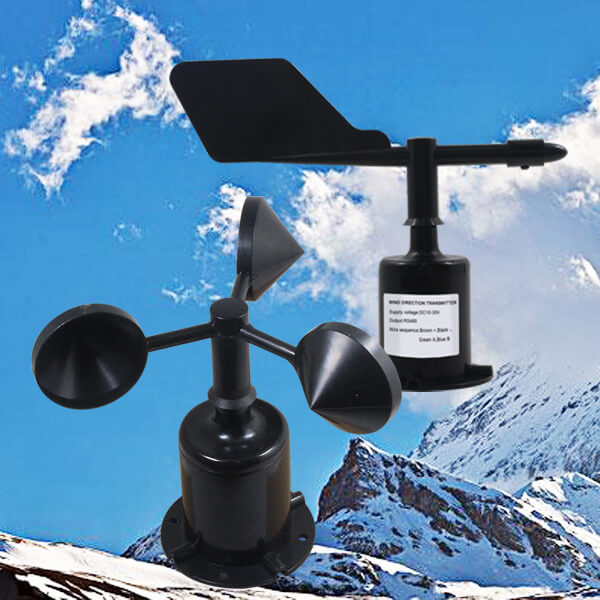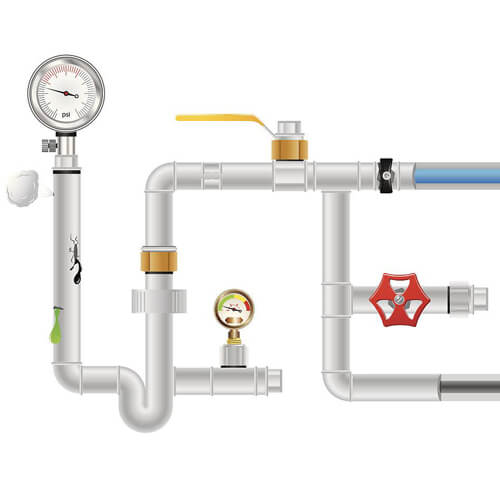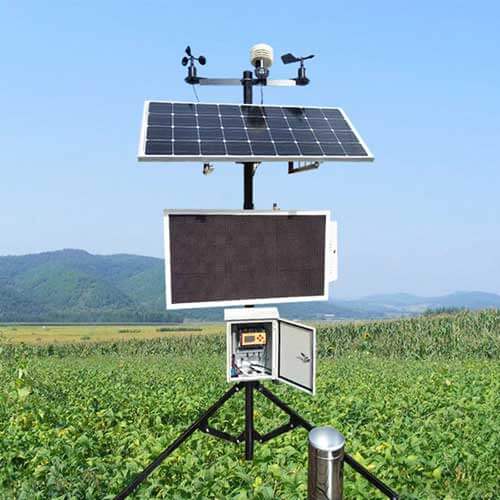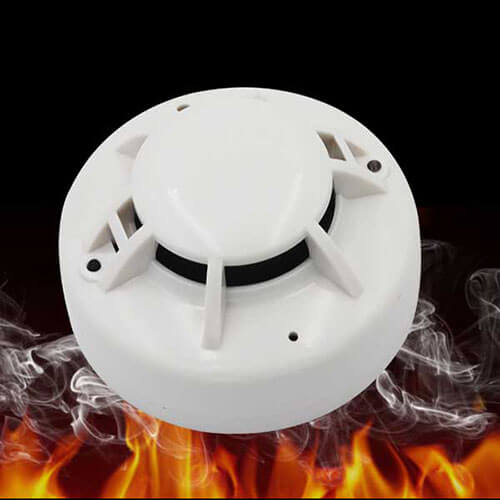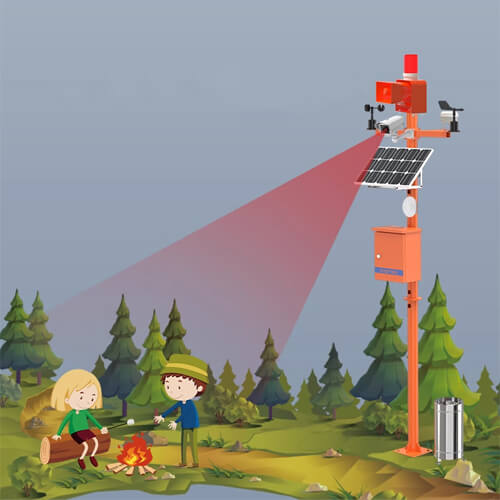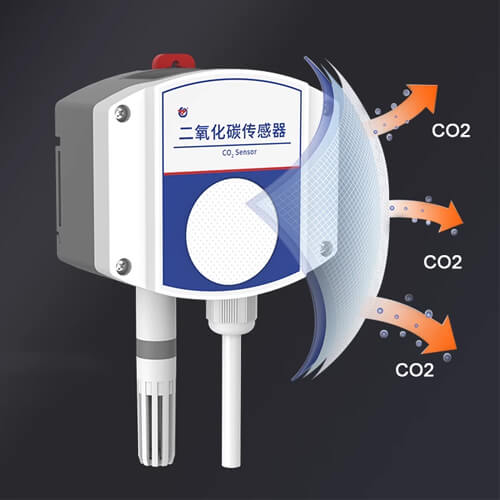Where to mount wind sensor on weather station?
The wind sensor is an important part of weather station equipment, it can provide users with real-time wind speed and direction data. Whether the wind speed and direction sensor can be installed reasonably is an essential skill for weather station enthusiasts. The weather station wind speed and wind direction sensor adopt flange installation. The threaded flange connection makes the lower pipe fitting of the wind sensor firmly fixed on the flange. The diameter of the chassis is 65mm, and the diameter of 6mm is evenly distributed on the circumference of 47.1mm. The installation hole is directly fixed on the cross arm of the weather station with a length of 0.5m using bolts. The speed and direction wind sensor should be installed vertically on the cross arm 3 meters above the ground, and the distance between the two sensors should be 0.5 m. It is installed at both ends of the cross arm. The mounting height of the wind sensor depends on the height of the meteorological standing pole.
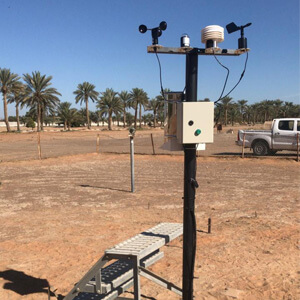
Notes for the installation process:
1. Ensure that the vertical pole of the weather station is perpendicular to the horizontal line to avoid tilting.
2. The upper shell of the wind direction sensor has a north mark point N, which should be aligned to the north during installation.
3. The wind direction sensor has been adjusted to zero. Do not loosen the brake screw between the wind direction cap and the main shaft at will.
4. The wind speed sensor cannot be disassembled by itself, let alone touch the sensor core.
5. Keep away from high-power interference equipment as much as possible to avoid inaccurate measurement, such as inverters, motors, etc., when installing or removing the transmitter, you must disconnect the power supply. Water in the transmitter can cause irreversible changes.
Where to mount wind sensor on building?
How to choose the installation location when there are a large number of buildings in the environment of the installation wind sensor? The wind speed sensor and wind direction sensor are usually installed on the roof. In order to ensure the accuracy of the measured value of the wind sensor, it is necessary to ensure that the sensor is installed at a height of 3m above the top of the building. You can fix the two sensors on two stainless steel brackets with bolts, and then fix the brackets on both sides of a sufficiently high mast. This ensures that the installation height of the wind sensor is higher than the top of the building.
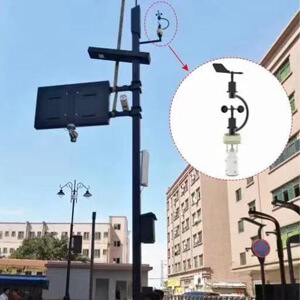
If you don’t have a suitable mast, you can choose a 3m bracket and fix the bracket vertically on the roof. Install two wind sensors on the top. In this way, install the wind sensors on the roof.
Where to mount wind speed sensor on a boat?
Due to the convenience provided by the Internet of Things technology, the safety of the maritime industry is getting higher and higher. Sailors can obtain reliable weather information based on various instruments. For example, by installing marine wind sensor instruments on a boat, sailors can stay in the cabin to grasp the wind conditions outside, which is safe and accurate. The height of the mast top of large ships is about 15m above the sea surface. Wind sensors are usually installed on both sides of the mast. One is located 4m from the left arm of the mast (relative to the bow direction), and the other is installed at the top of the mast without shelter. With the continuous upgrading of technology, in order to avoid magnetic interference, navigation technology now uses ultrasonic wind speed and direction sensors to measure data. This kind of sensor is not subject to magnetic field interference and is simple to install. Escort the safety of sailors.
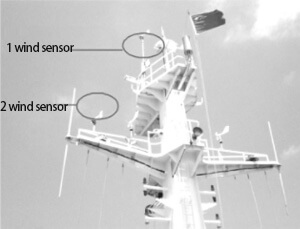
Where to mount wind sensor on an airplane?
The “airspeed tube” on the aircraft is a typical Pitot tube wind speed sensor and an extremely important measurement tool on the aircraft. It must be installed in an area outside the aircraft where the airflow is less affected by the aircraft, generally in front of the nose, vertical tail, or wingtip. When the plane flies forward, the airflow rushes into the airspeed tube, and the sensor at the end of the tube will feel the impact force of the airflow, that is, dynamic pressure. The faster the plane flies, the greater the dynamic pressure. If you compare the static pressure and the dynamic pressure when the air is at rest, you can know how fast the air rushes in, that is, how fast the airplane flies.
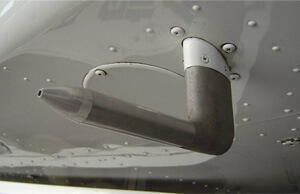
The tool for comparing the two pressures is a hollow circular box with corrugated surfaces made of two thin metal sheets, called a bellows. The box is sealed, but there is a tube connected to the PTS. If the airplane is fast, the dynamic pressure will increase, the pressure in the bellows will increase, and the bellows will bulge. A device composed of small levers and gears can measure the deformation of the bellows and display it with a pointer. This is the simplest airplane airspeed indicator. The static pressure measured by the pitot tube can also be used as the calculation parameter of the altimeter. If the bellows are completely sealed, the pressure inside will always be equal to the pressure of ground air. In this way, when the aircraft flies into the air, the altitude increases, the static pressure measured by the airspeed tube drops, and the bellows will bulge, and the height of the airplane can be measured by measuring the deformation of the bellows. This altimeter is called a barometric altimeter. The speed measured by the airspeed tube is not the actual speed of the aircraft relative to the ground, but only the speed relative to the atmosphere, so it is called airspeed. If there is the wind, the speed of the aircraft relative to the ground (called ground speed) should also be added to the wind speed (flying downwind) or minus wind speed (flying upwind).

